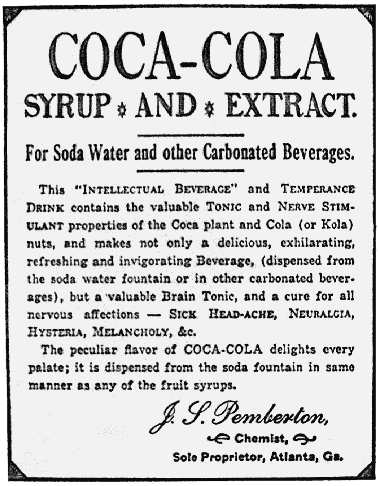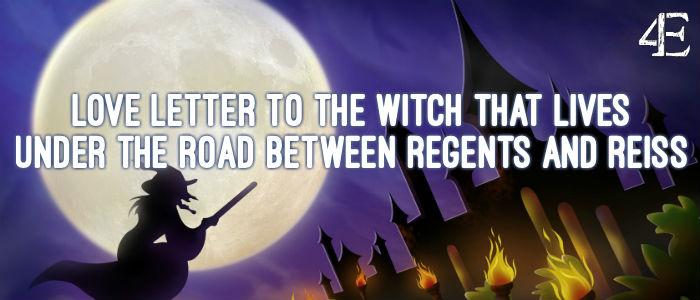Soda. Some of you have given it up for lent, some of you have given it up for life. But to me, there’s nothing like an ice-cold Coca-Cola. Speaking of Coca-Cola, ever hear of the unequivocally idiotic myth of cocaine once existing in Coca-Cola? Well, lately I’ve discovered that its idiocy is not so unequivocal (smooth segue, I know).
In fact, before Coca-Cola was Coca-Cola it was Pemberton’s French Wine Coca. Yes, that’s right, it was a combination of alcohol and cocaine that promised to be a “most wonderful invigorator of sexual organs” (and you thought Four-Loko was extreme…). It was marketed as a panacea—just in case, here’s the definition. The good folks down in Georgia, though, had the good sense to ban it. No, not because of its concentration of the now illegal class-A drug, but because of the alcohol. An early local prohibition marked the end of the Wine Coca era in Georgia. Try to find that kind of info in a textbook.
The Company replaced the alcohol with sugar syrup in 1903 and bada-bing, bada-boom, you have today’s drink. “But wait, 4E, what about  the ecgonine alkaloid in the coca plant?” (a.k.a “Are we still drinking cocaine?”). Rest assured, we are no longer drinking cocaine. If we were, Pepsi would be out of business. In the magical land of the New Jersey industrial landscape, there exists a chemical processing facility that extracts all of these psychoactive elements of the coca plant. So yeah, our favorite soft drink has coca plant in it, but no more gutter glitter.
the ecgonine alkaloid in the coca plant?” (a.k.a “Are we still drinking cocaine?”). Rest assured, we are no longer drinking cocaine. If we were, Pepsi would be out of business. In the magical land of the New Jersey industrial landscape, there exists a chemical processing facility that extracts all of these psychoactive elements of the coca plant. So yeah, our favorite soft drink has coca plant in it, but no more gutter glitter.
“But why, 4E, why did they ever decide to remove the ecgonine alkaloid (sometimes referred to as Merchandise No. 5) from Coke so early?” Well, indeed, cocaine did remain legal until 1914 (11 years after the change). Apparently the hypersexual side-effects of the cocaine produced a marked increase in interracial rape, which was something the racist (and, it goes without saying, anti-rape) turn-of-the-century society would not tolerate.
We find that one of today’s most beloved beverages is actually primarily a result of a localized prohibition and overpowering social pressures. Coca-cola has more history than we sometimes realize. Next time you’re poppin’ open a bottle of the caramel-colored sugary refreshment, think about it.
*Disclaimer: Just because Coke no longer contains Lady Snow does not mean it cannot be addictive.
Photo: theatlantic.com
*Simply Science is a reoccurring post that aims to make recent scientific discoveries accessible and applicable to the Georgetown student.









